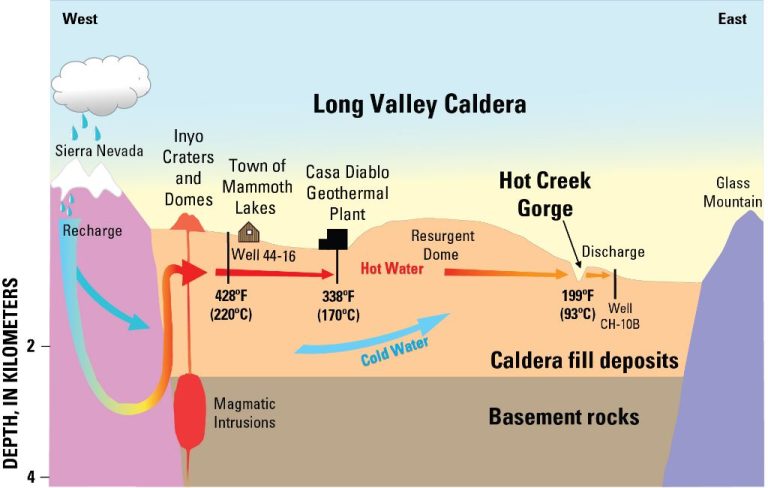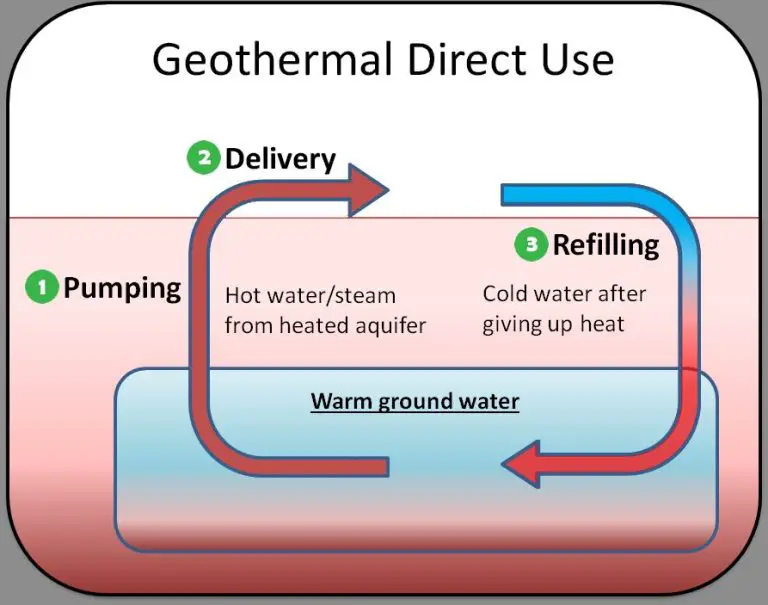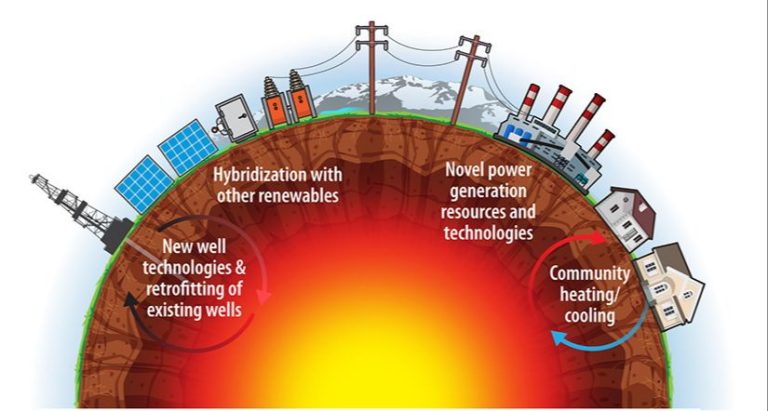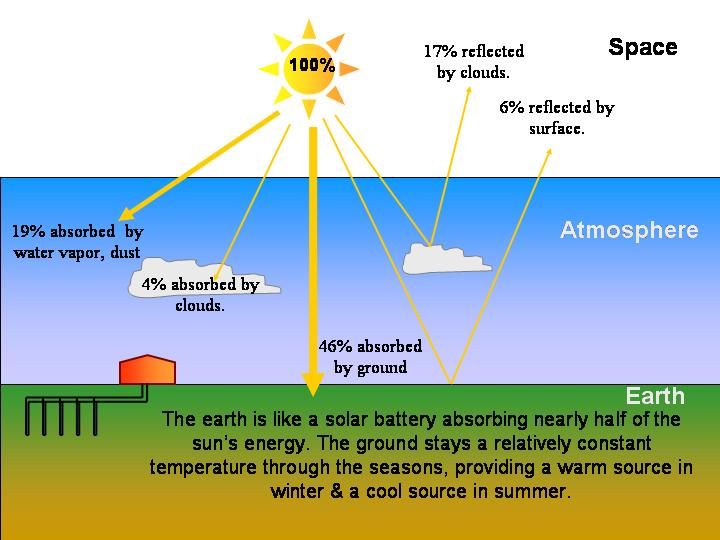Does Geothermal Energy Work In Alaska?
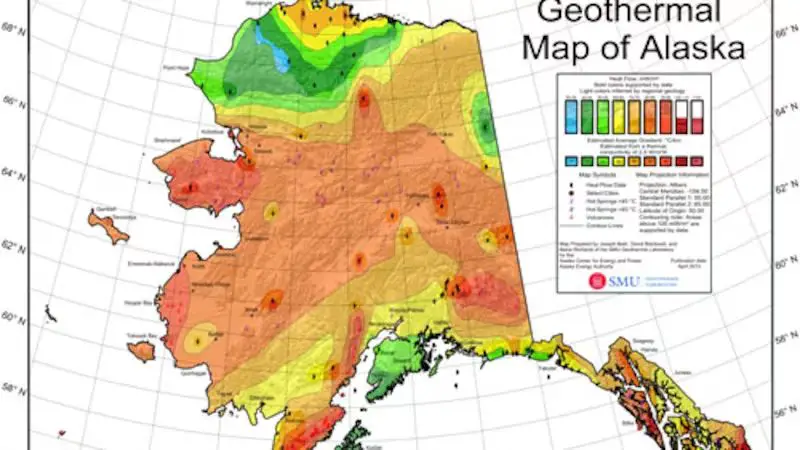
Geothermal energy is a renewable source of energy that utilizes the natural heat within the earth to generate electricity and provide heating. Alaska has significant geothermal resources, with over 100 identified hot springs and volcanic centers across the state. While geothermal is not yet widely used in Alaska, there is strong potential to develop this local and sustainable energy source, especially for remote communities that depend on expensive diesel fuel for power generation. With further exploration and investment, geothermal could play an important role in Alaska’s energy mix and reduce reliance on fossil fuels.
What is Geothermal Energy?
Geothermal energy is heat energy generated and stored within the Earth (Alden, 2017). The word geothermal comes from the Greek words geo (earth) and therme (heat). Geothermal energy is considered a renewable energy resource because the heat emanating from the interior of the Earth is continuously replenished by the slow decay of radioactive particles in the planet’s core (US DOE, 2022).
Geothermal energy consists of hot water or steam reservoirs located in underground hydrothermal systems. These reservoirs of hot water can exist naturally due to geologic conditions or can be engineered reservoirs created by injecting fluid into hot and dry rocks (Alden, 2017). The naturally occurring reservoirs are located in geologically active areas, such as Western North America, Iceland, Southeast Asia, East Africa, and Central America (US DOE, 2022). This natural heat can be harnessed to generate clean electricity or provide direct heating and cooling.
Geothermal resources are classified by temperature, with higher temperature reservoirs being suitable for power generation. Reservoirs above 150°C can be used for electricity production with binary cycle power plants, while reservoirs above 180°C are suitable for flash steam power plants (Alden, 2017). Lower temperature reservoirs around 80–150°C can be used directly for heating, such as district heating systems that provide heat for buildings and greenhouses (US DOE, 2022).
How Geothermal Energy Works
Geothermal energy utilizes the heat below the earth’s surface to generate electricity. Here’s an overview of the process (source):
1. Wells are drilled into underground reservoirs to tap steam and very hot water.
2. The steam travels up the well, and powers a turbine connected to a generator that produces electricity.
3. The steam is allowed to cool, condense back into water, and then is injected back into the reservoir to be reheated.
The hot water that is pumped out can also be used directly for heating buildings, greenhouses, fish farms and a variety of industrial processes. Some power plants use the steam and hot water directly, without converting to electricity.
In summary, geothermal power generation relies on drilling wells and piping hot underground water or steam to the surface. The natural heat generates electricity or provides direct heating and cooling.
Geothermal Resources in Alaska
Alaska is geothermally active with over 100 identified thermal springs and hot spots. According to the Alaska Department of Natural Resources Geothermal Program, there are three distinct geothermally active regions in Alaska: the Interior hot springs, running from the Yukon Territory of Canada to the Seward Peninsula; the Alaska Range and Aleutian Arc; and scattered coastal occurrences (Alaska Department of Natural Resources).
Some of the highest temperature geothermal resources in Alaska occur along the Aleutian volcanic arc and range from 750-1300 degrees F. Major geothermal occurrences are found at Serpentine Hot Springs, Pilgrim Hot Springs, Chena Hot Springs, and along the Alaska Peninsula and Aleutian Islands (Alaska Renewable Energy).
The Interior region of Alaska contains over 30 moderate-temperature geothermal sites (120-200 degrees F), with direct use applications like space heating, agriculture, aquaculture, and recreation. Chena Hot Springs is a well-known resort that utilizes geothermal energy for electricity and heating.
Alaska’s geothermal capacity is estimated at over 16,000 MW electrical generation potential. However, less than 0.2% of that potential has been developed. With abundant geothermal resources, Alaska has significant room to expand geothermal energy production.
Benefits of Geothermal
Geothermal energy provides many benefits as a clean, renewable energy source. Unlike fossil fuels that emit greenhouse gases, geothermal energy does not produce emissions that contribute to climate change and air pollution. According to the U.S. Department of Energy, “Geothermal power plants emit on average less than 5% of the carbon dioxide emissions of a comparable fossil fuel power plant” (https://www.energy.gov/eere/geothermal/geothermal-faqs). This makes geothermal a sustainable energy solution.
Geothermal energy can provide constant baseload power that is not subject to fluctuations based on weather or time of day like some other renewable sources. The geothermal resource under the earth’s surface is constantly available. As Enel Green Power explains, “geothermal energy is always available. It is not impacted upon by changing weather conditions and produces electricity 24 hours a day, 365 days a year” (https://www.enelgreenpower.com/learning-hub/renewable-energies/geothermal-energy/advantages). This reliability and consistency makes geothermal a valuable renewable energy source.
Increased development of geothermal energy can reduce reliance on fossil fuels like coal, oil, and natural gas. Tapping into the earth’s natural heat can provide a clean alternative for electricity generation and heating applications. This supports energy diversity, affordability, and security.
Challenges of Geothermal in Alaska
Although Alaska has significant geothermal resources, there are several challenges to developing geothermal energy in the state. Three major challenges are the high upfront costs, remote locations of resources, and lack of infrastructure.
The upfront costs for geothermal energy projects tend to be high. Exploration, drilling test wells, and constructing a geothermal power plant require major capital investments before any electricity can be generated and revenue earned. This is especially challenging in Alaska where project costs tend to be higher due to the remote locations.
Most of Alaska’s identified geothermal resources are located far from existing transmission lines and population centers that need electricity. Building transmission infrastructure to connect remote geothermal sites to the electrical grid is extremely expensive in Alaska’s harsh and inaccessible terrain [1]. The lack of infrastructure also makes it difficult to transport the skilled workers and heavy equipment needed for exploration and construction.
Overall, the high upfront investments required, Alaska’s remoteness, and lack of existing infrastructure pose significant barriers to developing geothermal energy resources across much of the state. Creative solutions like modular power plants and local microgrids have unlocked geothermal energy in a few locations like Chena Hot Springs, but most sites remain constrained by these challenges.
Case Studies
There are a few notable examples of successful geothermal projects in Alaska that demonstrate the viability of this technology in the state. One of the most well-known is the geothermal power plant at Chena Hot Springs, located about 60 miles east of Fairbanks. The resort installed Alaska’s first geothermal power plant in 2006, which generates electricity from the low-temperature geothermal resources available at the site [1]. This innovative project uses Organic Rankine Cycle technology to convert the low temperature geothermal fluids, as low as 165°F, into electricity. The plant provides about 400 kW of electrical power, meeting much of the resort’s needs [2].
Another example is a wind-diesel hybrid power system installed in Kotzebue, Alaska in 1997. The system combines wind turbines and diesel generators to provide power to the remote community. Geothermal energy was also harnessed from an abandoned oil well to heat several public buildings in Kotzebue, reducing diesel fuel usage [2]. This demonstrates the potential to integrate geothermal with other renewables like wind power in remote, off-grid areas of Alaska.
Potential for Future Development
Alaska has significant potential to expand geothermal energy production in the future due to its vast geothermal resources and growing interest in renewable energy. According to the Alaska Division of Geological & Geophysical Surveys, Alaska has over 120 identified geothermal sites, but only a fraction of them have been developed into energy production so far [1]. Areas like the Aleutian Islands, Alaska Peninsula, Wrangell-St. Elias region, and parts of Southeast Alaska are considered highly prospective for new geothermal development.
Recent research by the US Department of Energy has identified over 16,000 megawatts of undiscovered hydrothermal power potential in Alaska, primarily available in the central and southeastern regions of the state [2]. As demand for renewable energy grows both within Alaska and the greater Western US, geothermal is positioned as an attractive baseload power solution. New technologies and drilling techniques also enhance the accessibility and viability of geothermal resources that were previously undevelopable.
The Chena Hot Springs geothermal plant near Fairbanks demonstrates Alaska’s ability to innovate and lead in geothermal tech. Its 400kW power plant uses a binary cycle system to generate electricity from water as low as 165°F. This opens up opportunities for lower-temperature geothermal across the state. With continued investment and supportive policies, Alaska’s abundant geothermal reserves could play a major role in powering a renewable energy future.
Conclusions
In summary, geothermal energy has significant potential in Alaska due to the state’s abundant geothermal resources, but there are also notable challenges to developing those resources on a large scale. Key points:
- Alaska has over 100 identified, high-temperature geothermal sites spread across the state that could supply ample clean energy if developed (Economic Feasibility Study of the Geothermal Project for Alaska, 1979).
- However, challenges like Alaska’s remote location, lack of infrastructure, high upfront costs, and seasonal drilling restrictions have limited major geothermal development so far (The Adak Geothermal Project is concerned with the use of geothermal energy as a possible alternative to the present fossil fuel energy system on Adak, 1979).
- Small-scale and direct use projects have proven successful, like Chena Hot Springs Resort’s 400 kW power plant (Alaska, n.d.).
- With improved technology and strategic long-term planning, geothermal could play a significant role in Alaska’s renewable energy mix.
In conclusion, Alaska has abundant geothermal potential but faces challenges to large-scale development. Smaller local projects demonstrate geothermal can work and provide a clean, stable energy source in the state. With strategic planning and investment, geothermal could play a key role in Alaska’s energy transition and build energy resilience.
Further Reading
Here are some additional resources for learning more about geothermal energy in Alaska:
Alaska Division of Geological & Geophysical Surveys – Geothermal Energy
Renewable Energy Alaska Project – Geothermal Energy in Alaska
Assessment of Geothermal Resources for Electric Generation in Alaska, 2005
Alaska Energy Almanac – Geothermal Chapter
These resources from government agencies, nonprofits, and research provide in-depth information on geothermal energy potential, resources, development, and usage in Alaska.

